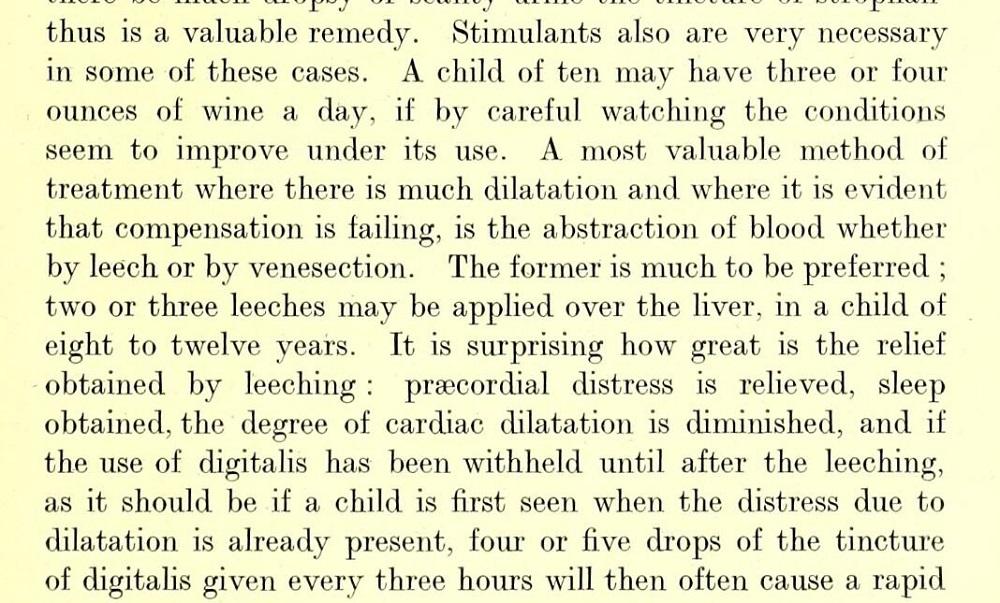The specialty paediatric cardiology traditionally includes the care of patients of all ages with congenital heart disease and is a sub-specialty of (adult) cardiology rather than of paediatrics. For this reason physicians training in the specialty are overseen by the Royal College of Physicians (RCP) rather than the Royal College of Paediatrics and Child Health.
One of the earliest books devoted to the cardiology of young people is Diseases of the heart and circulation in infancy and adolescence by John M Keating and William A Edwards, published in 1888. A review in the Edinburgh medical journal (November 1888, p 465) commends the work as ‘a painstaking effort to collect and compare data of all kinds bearing upon the subject’. This book is extremely rare in UK libraries, but it is found in the collection donated to the RCP library by the cardiologist and RCP fellow Evan Bedford.

The diseases of children is another an important early paediatric medicine textbook, written by RCP fellow Sir James Frederic Goodhart and published in 1913. His interest in children’s medicine saw him take posts as a consulting physician at the Evelina Hospital for Sick Children and with Guy’s Hospital. Through these posts he worked on various cases of childhood illnesses and ailments, including paediatric cardiology. His vast knowledge is laid out in this textbook and he includes an entire chapter on the subject.
He opens the chapter detailing how children’s hearts are different to those of adults. At birth children’s heart rates are 130 beats per minute and then they gradually slow down, but they only drop to 70 or 80 beats per minute around 6 years of age. Children’s hearts can differ in terms of strength: one beat could be strong and the next weak. Their hearts also sound different: Goodhart described it as a tic-tac sound rather than the labouring thuds of adults. This is what made working with children with heart disease in the 19th and early 20th centuries so complex. Misdiagnosis did occur, particularly with diseases such as meningitis, where an irregular heartbeat was one of the diagnostic criteria. Goodhart expressed his frustration at the available diagnostic equipment such as the sphygmograph (for measuring blood pressure) as it did not deliver reliable information when a child was the patient. For children under 4 years of age Goodhart recommended that congenital causes be investigated first.

To demonstrate that his observations were based in fact, Goodhart detailed some of his own cases. He described the symptoms and signs of disease as well as the treatments given. For example, opium was said to be the one of the most valuable remedies for endocarditis for children aged six to 14. It was not the only remedy, however, and Dover’s powder, belladonna with bromide or iodine of potassium, digitalis and wine were also recommended. Leeching was also featured – with instructions to place two or three critters over the liver – it was said that this helped children to sleep. But above all ‘absolute’ rest for a long period of time was said to be the best treatment for many heart conditions.
Karen Reid, library manager
- Paediatric cardiology is the RCP specialty spotlight for May 2016.
- The RCP library provides resources supporting the current practice and illustrating the history of all of the specialties covered by the RCP.
